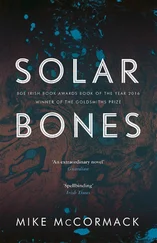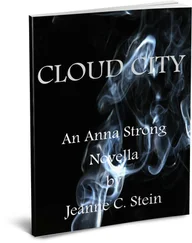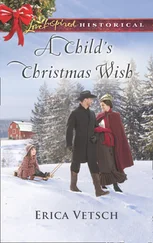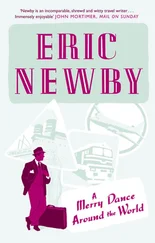Now I would never know for certain why she’d rejected me. But she had gone ahead and married Sam, just as he’d told me she would.
Ah, well. Knowing she was dead, there wasn’t much reason for me to prolong my stay in Duncairn. I made up my mind to leave the very next morning. For today, I’d walk the hills one last time and visit the house up in the moors.
And, of course, her grave.
I was glad of my winter coat when I set out across the moors into an eye-watering wind that morning. The natural landscape was unchanged from thirty years ago, as — no doubt — it wasn’t much changed since the last great geological upheaval of planet Earth. Mine were the only human footprints in the snow, but in sheltered areas I could see the delicate tracks of hares and rabbits and birds as well as various other moor creatures. Their patterns were so elaborate they might have spelled out some message, if only I had the wisdom to interpret it.
After I’d walked for a while, one of those black moorbirds darted past me, bringing to mind how Miriam and I had met, how she’d climbed the rock to warn me against their rather gruesome taste for human eyeballs.
And the rock! Yes, there it was, away to the west, a dark outline against the snow. It looked smaller now and the hills behind it less impressive. But at least they still existed, whereas Miriam was dead and her face was now only a ghostly image in my mind. Surely that, too, was one of the saddest things: how time and distance become a frosted window through which we can barely make out the features of those we love.
IN THIS MELANCHOLY state of mind, after a half hour of walking I reached the house.
At first glance, it too looked smaller, though perhaps it was just that the windbreak of evergreens had grown bigger. The oak tree on the front lawn was taller, but skeletal, with only a few leaves clinging to the branches, pretending winter hadn’t come yet.
The house, close up, looked neglected. A coat of moss made the name Duncairn Manor on the lintel only half legible. The paint on the door was peeling away. The thin layer of snow on the roof didn’t conceal the fact that some of the tiles were broken or missing. One of the chimney pots was cracked and another had fallen over. The downstairs windows were unbroken but had been shrouded with white cloths, so nothing inside was visible.
I knocked on the door just in case, then I tried turning the knob. The door squealed open and I stepped inside.
THE SMELL WAS the first thing I noticed — the damp smell of mould and abandonment. It might have been my imagination, but there seemed to be a hint of sweetness in it, too, as though a residue of the old man’s opium had lingered all this time.
Enough light came through the white cloths over the windows for me to see that the floor was dusty and swaths of faded wallpaper were in the process of detaching themselves. In the living room, chairs and couches and other furniture had been draped in dark blue cloths and looked like oddly shaped monsters asleep. Even the pictures on the walls were hung with these cloths.
The door of the library was ajar. Remembering that night long ago when I’d first seen Miriam’s father on the sofa before the blazing fire, I went over cautiously and looked in.
The room was deserted. The furniture was covered with cloths, the books were all gone from the shelves, and the grate was cold. From the window, there was a buzzing sound. I drew back the cloth just a little. Lying on its back on the sill was a huge bluebottle that must have somehow got into the house during the last days of summer and managed to survive. As I watched it trying to right itself, the wind suddenly whipped up outside. The tips of the evergreens bent over a little and the house groaned.
That was enough of this sad place for me. I began to make my way out.
All at once I remembered something and went into the living room again. Above the mantelpiece was a covered picture. I carefully lifted the cloth away.
Yes! It was the photograph of Miriam, intact after all these years. I stood there at the dead fireplace for the longest time, absorbing the image of that face I’d almost forgotten. She was indeed as beautiful as I’d always dreamt. My eyes filled with tears of pleasure mixed with grief.
At that very moment, I heard a measured creaking on the floorboards above my head. On that morning long ago when Miriam had gone upstairs to get me a book, I’d heard that same noise from her movements up there. Now, I was overwhelmed with the feeling that, quite impossibly, it was happening all over again: she was up there waiting for me.
I went to the bottom of the stairs, but I didn’t go up. The dust looked as though it hadn’t been disturbed for many years. I called out her name. I called it again and again.
Of course, no one answered.
I walked back into the living room, took the picture down from the wall, and tucked it under my arm. I stepped outside into the cold wind that no longer seemed so cold. Then I pulled the door shut behind me and left that haunted place without looking back.
For several hours after leaving the manor I walked the moors around Duncairn, putting off and putting off the moment. In the end, by a great act of will, I made my way to the eastern outskirts of the town — and the graveyard. It was a flat plot of land, surrounded by a low, weathered stone wall. The entranceway was through rusty gates wide enough for a hearse to pass, with gargoyle figures leering down from each gate pillar. My footprints were the only ones on the layer of snow along the central path, which was flanked by the most ancient headstones, many of them tilted and crumbling, the inscriptions on them too worn to make out.
Amongst the plainer headstones and slabs that marked the more modern burials, I soon found the grave marker I was seeking. It was a small, granite headstone with three names:
JOHN GALT SAMUEL MACKAY
MIRIAM MACKAY
There were no dates or inscriptions.
Feeling quite miserable, I stayed only a few minutes. Then, as I was leaving, I noticed a slight protrusion in the snow on the surface of the grave. I stooped and brushed at it with my fingertips. To my surprise, a tiny bunch of red carnations was lying there, still in its paper wrapper. Some of the petals were unwithered.
WHEN I GOT BACK to the Bracken Inn, I removed the photograph of Miriam from its frame and put it carefully into my suitcase. After dinner that night, I went to the front desk to tell the Englishwoman when I’d be checking out next morning. I also mentioned to her that I’d visited Sam Mackay’s grave and seen some flowers on it that appeared quite fresh.
“Oh yes, that would be their daughter who put them there,” she said. “She comes a few times a year to visit the grave. She sometimes stays the night here in the inn. She was here two weeks ago, in fact — that would account for the freshness of the flowers.”
Their daughter? I was surprised to hear that.
“Oh yes. Sarah. Sarah Mackay. She’s a very nice girl,” she said. “She’s an administrator of some sort at Eildon House.” This was, apparently, a government institution located in an isolated area of the Border country southeast of Duncairn. Sarah was clearly devoted to the care of her parents’ grave, as Eildon House was at least a three-hour drive away on the treacherous roads at this time of year.
“I could give you her phone number,” said the Englishwoman before I could ask.
She rummaged in her card index and found me the number.
“Eildon House is a strange place for such a nice girl to work,” she said, looking around as if to make sure no one was listening and lowering her voice: “It’s for people who’ve gone wrong in the head.”
Читать дальше











